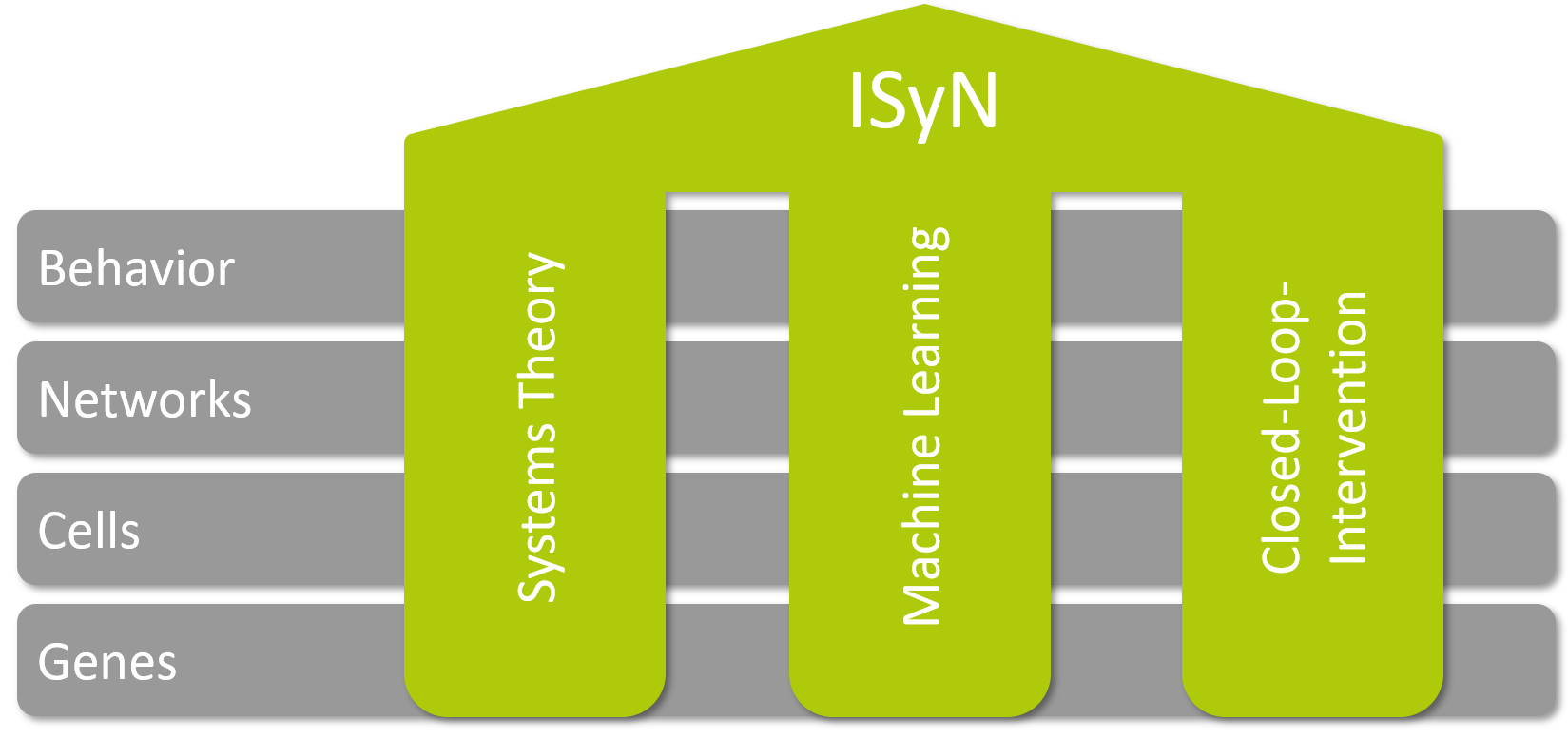A major focus of neuroscientific research in Mainz is the investigation of dynamic processes on multiple levels: from epigenetics, cellular interactions and local neural networks to brain-wide systems and social interaction. In physiological as well as pathophysiological contexts, emergent principles defining the dynamics of the respective level of observation are explored. Of particular importance are longitudinal studies in both animal models and humans. These studies reveal metastable functional states, the understanding of which appears to be crucial for the development of system-driven approaches to therapeutic interventions.
It is precisely the multidimensionality and longitudinal nature of these approaches that creates a completely new class of data of unprecedented complexity. Classical hypothesis-driven approaches to the analysis of these data reach their limits here. We have to break new ground towards a data-driven system analysis, only in this way can the full potential of these approaches be exploited.
Significant expertise in data-driven systems analysis, from machine learning to systems theory, already exists in the neuroscience working groups at JGU, the University Medical School and the Leibniz Institute of Resilience Research. However, this individual expertise is currently limited to the respective research area. In order to overcome dimensional boundaries and to explore new, causally explored system principles, it is necessary to bundle and strengthen these individual areas of expertise.
The Initiative for Systems Analysis in Neuroscience (ISyN) at the LIR is intended to provide a focal point for cross-scale systems theoretical and data-driven concepts in the neurosciences.
For this purpose, three methodological pillars that penetrate the scales will be established: The first pillar is systems theory. The stability of dynamic functional states will be investigated at all levels of observation (genes, cells, networks, behaviour) as well as between the levels of observation. Emergent pathophysiological “brain states” in neurodegenerative and neurological diseases are given as examples. The second pillar consists of data-driven “machine learning” approaches. Using an appropriate algorithm, condition-determining variables are extracted from the flood of multidimensional data sets, which elude conventional hypothesis-driven approaches, also vertically through all levels. The third pillar represents the real-time intervention. Data-driven classifiers are used to reduce the complexity of data flows, which then allow for a real-time recording of the neural functional state. This in turn enables causal intervention, which has an effect on the neuronal system in the sense of a “closed loop”. An example of this are combined EEG-TMS approaches.
However, following the idea of the highly successful research focus on translational neuroscience (ftn), a separation between more basic scientific approaches, which work on animal models or cellular systems, and human scientific approaches is deliberately avoided. This prevents a “translational roadblock” in the germ.
In ISyN, the individual expertise of the research groups will be combined, and new concepts of method training and interaction of neuroscientists at all levels of education will be achieved. The instrument of the “SystemsClub” is to be initiated, which will focus on the exchange and training of the scientists carrying out the projects, especially at doctoral and postdoc level. In many cases, system-theoretical and data-driven methods are generic and can be applied to different questions by incorporating the relevant expert knowledge from the various areas of neuroscientific research. For this purpose, a series of seminars and method courses will make systems analysis comprehensible and applicable to a broad basis of neuroscientific research groups.
ISyN, established at the LIR, is also intended to be the link between new systems analysis cooperations with university and non-university partners.
All in all, the innovative, synergetic ISyN has the potential to have a considerable impact beyond the classical limitations of individual disciplines of neuroscience.

